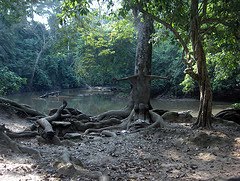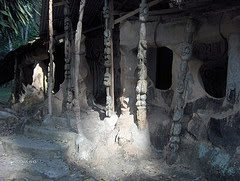Sunday
Nigeria pre colonial currency
Manillas Bracelet currency
The name manilla is said to derive from the Spanish for a bracelet manella, the Portuguese for hand-ring, or after the Latin manus (hand) or from monilia, plural of monile (necklace). They are usually horseshoe-shaped, with terminations that face each other and are roughage-shaped. We have different type of manilla and each ethnic had names for each variety of manilla and locality. They valued them differently, and were notoriously particular about the types they would accept. Manillas were partly differentiated and valued by the sound they made when struck.
A report by the British Consul of Fernando Po in 1856 lists five different patterns of manillas in use in Nigeria. The Antony Manilla is good in all interior markets; the Congo Simgolo or 'bottle-necked' is good only at Opungo market; the Onadoo is best for Calabar Kingdom, Igbo country between Bonny and New Kalabari; the Finniman Fawfinna is passable in Juju Town and Qua market; but is only half the worth of the Antony; and the Cutta Antony is valued by the people at Umballa.
The Portuguese cast huge quantities of these Manilla to use for trade in West Africa. They have been widely used since the 16 century. This type currency was used throughout Nigeria and neighboring countries for more than 300 years. Manillas have the shape of a ring armlets, mostly in bronze or copper, very rarely gold, which served as a form of money or barter coinage and to a degree, ornamentation, amongst certain West African peoples (Guinea Coast, Gold Coast, Calabar Kingdom and other parts of Nigeria, etc.). They also became known as "slave trade money" after the Europeans started using them to acquire slaves for the slave trade into the Americas (as well as England prior to 1807).
Subscribe to:
Post Comments (Atom)










your work is quite brief and interesting. It has helped me in completing my assignment. I love to chat more with u
ReplyDelete